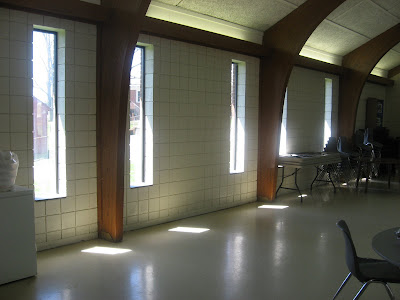
a)movie theater gathering space
b)ambient lighting is used to illuminate the surrounding area
c)recessed lighting and a large cove lighting area are the main lamps used in this space
d)should be used in moderation to accentuate details or for soft general lighting in coves and wall slots in applications where curvilinear architectural forms and detailing are prominent and affordable dimmability and/or color are required.
e)the recessed lighting directs downward focusing on the ground, the large cove lighting is used more as a focal point and does not influence the surroundings as well as the recessed.
f)the carpet retains the light, when the light is direct on the walls, it reflects and bounces elsewhere. It also looks like metal is the ceiling material, which provide alot of reflectivity.
g)this space is too bright for this area, because people will be coming out of dark rooms and you don't want to blind them when walking out, it would work better in the lobby.
h)dimming the lights or not having so many will help, also incorporating materials that will absorb light so it does not reflect other places.















































